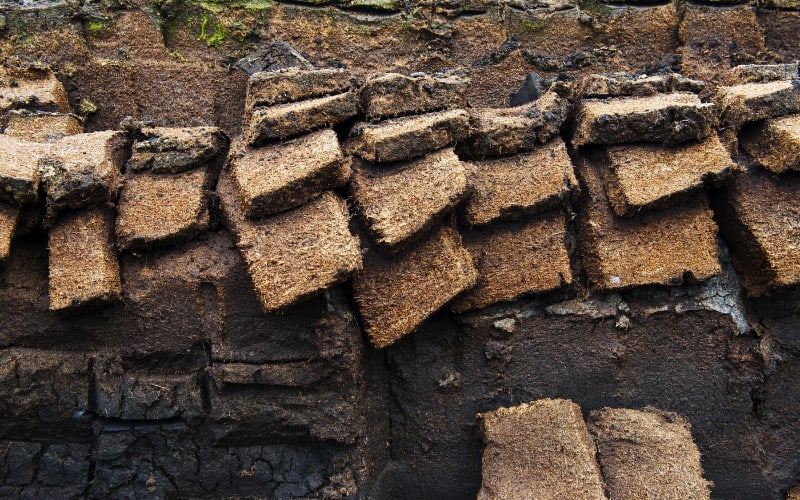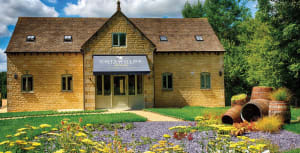As part of larger initiatives to safeguard peatlands and lower carbon emissions, the selling of peat will soon be prohibited in Scotland.
Before examining how a larger prohibition might affect commercial users, the goal is to first outlaw the retail selling of peat for home gardening.
"Peatlands are an integral part of our cultural and natural heritage and cover over a third of Scotland's land area. In good condition, they help mitigate climate change and can support communities with green jobs. In poor condition, though, the benefits are lost and peatlands become a source of carbon emissions. Restoring Scotland's peatlands can help us fight climate change, support biodiversity and provide good, green jobs - often in rural communities. This is why we have invested £250 million to restore 250,000 hectares of peatlands over a 10 year period to 2030. Hand in hand with our efforts to restore degraded peatlands, we must also do all we can to protect them. This means we must consider how to stop using peat, whether extracted in Scotland or elsewhere. We welcome a wide range of views to this consultation to ensure that we can set dates for ending the sale of peat that are both realistic and ambitious." ~ Environment Minister Mairi McAllan

Just a small portion of Scotland's peatland, which covers more than 2 million hectares overall, is exploited for commercial peat extraction. This area ranges from 1 to 2,000 hectares. The majority is used for agriculture, a minor portion is utilized for fuel, and just around 1% is used in the malting stage of making whiskey.
Scotland's peatlands are a unique and important natural feature of the country's landscape, covering an estimated 20-25% of the country's land area. Peatlands are areas of land where peat, a type of soil made up of partially decomposed organic material, has accumulated over thousands of years.
Peatlands are important for a variety of reasons, including their ability to store carbon, regulate water flow, and support a wide range of plant and animal species. In Scotland, peatlands also have cultural significance, with many traditional uses such as fuel and agriculture.
In recent years, there has been increasing recognition of the importance of peatlands for their role in mitigating climate change. Peatlands are one of the most efficient carbon sinks on the planet, storing more carbon per unit area than any other terrestrial ecosystem. When peatlands are damaged or degraded, however, they can release stored carbon into the atmosphere, contributing to climate change.
Unfortunately, Scotland's peatlands have been subjected to a variety of pressures in recent years, including drainage for agriculture, forestry, and other land uses, as well as overgrazing and pollution. These pressures can lead to the degradation of peatlands, with consequences for both their ecological and carbon storage functions.
To address these challenges, the Scottish government and other organizations are working to restore and conserve Scotland's peatlands. This includes measures such as re-wetting degraded peatlands, reducing grazing pressures, and improving land management practices. These efforts are not only important for preserving Scotland's natural heritage but also for contributing to global efforts to combat climate change.

Peatlands are important for several reasons, including their role in climate regulation, water management, biodiversity, and cultural heritage.
Carbon Storage: The ability to store more carbon per unit area than any other terrestrial ecosystem makes peatlands one of the planet's most effective carbon sinks. Peat may store up to 20 times more carbon per unit area than other ecosystems like forests because it is formed of partially degraded organic material that has accumulated over thousands of years. The stored carbon is released into the atmosphere when peatlands are destroyed or degraded, which contributes to climate change.
Water Management: Peatlands are crucial for controlling water flow and averting droughts and floods. They function like organic sponges, soaking up and storing water during heavy downpours and gently releasing it when the weather is dry. This supports a variety of plant and animal species that depend on a steady supply of water, prevents soil erosion, and helps to preserve the quality of the water.
Biodiversity: A large variety of plant and animal species may be found in peatlands, which are special environments. They provide a haven for endangered and unusual species such the black grouse, sundew, and bog rosemary. Also, they provide crucial nesting places for wading species like the redshank and dunlin.
Cultural Heritage: People have historically exploited bogs for agriculture, fuel, and other conventional purposes. They have a significant role in cultural legacy as well since they are the subject of several myths, legends, and folktales.
Peatlands are significant ecosystems that offer a variety of essential benefits to both people and the environment. To guarantee that these crucial services are maintained for future generations, peatlands must be protected and restored.








